Since the release of Dynasty, Flesh and Blood has seen the creation of some of the most innovative and peculiar deck strategies that have ever graced the game. If you're a Talishar regular, you may remember when Brainstorm Kano took the platform by storm. I spent some time mining that vein, using a variant that required defense reactions and reverse-stacking so I could draw-loop my opponents to death. Brainstorm Kano didn’t produce competitive results - thanks to Guardians, Brutes, Iyslander, and Arakni who were easily capable of extreme counterplay. But the sense of exploration in the corners of the game - similar to what I showcased in Iris Dromai - is present in today's build.
Today, I present a Rogue Theory: Rhinar’s Crash Course on Insider Trading, a deck that Top 8’ed a Road to Nationals and failed to sweep the top cut only because of an IP penalty caused by my own dyslexia.
The Decklist
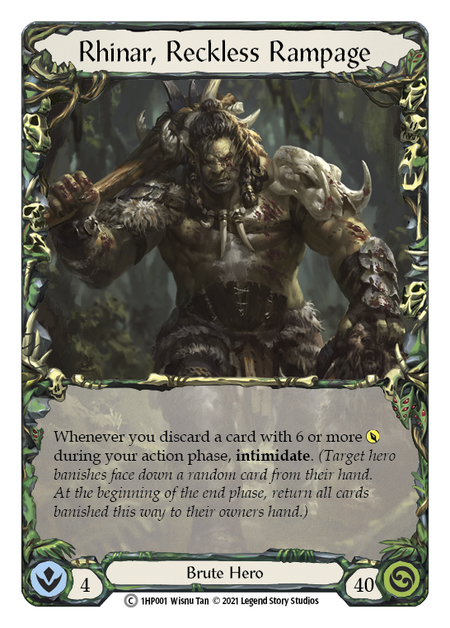
Weapons
- Mandible Claw (1)
Equipment
- Barkbone Strapping (1)
- Hope Merchant's Hood (1)
- Scabskin Leathers (1)
- Nullrune Gloves (1)
- Gambler's Gloves (1)
- Skullhorn (1)
- Heartened Cross Strap (1)
Loadout
- Alpha Rampage (Red) (3)
- Berserk (Yellow) (3)
- Bare Fangs (Red) (3)
- Beast Within (Yellow) (3)
- Amnesia (Red) (3)
- Bloodrush Bellow (Yellow) (3)
- Reincarnate (Yellow) (3)
- Trade In (Blue) (3)
- Massacre (Red) (3)
- Smash Instinct (Yellow) (3)
- Reckless Swing (Blue) (3)
- Trade In (Yellow) (3)
- Crazy Brew (Blue) (3)
- Pulping (Red) (3)
- Pack Call (Yellow) (3)
- Savage Beatdown (Red) (3)
- Skull Crack (Red) (3)
- Swing Big (Red) (3)
- Trade In (Red) (3)
- Tear Limb from Limb (Blue) (3)
- Savage Feast (Red) (3)
- Wild Ride (Red) (3)
- Wrecker Romp (Blue) (3)
As with my Blue Dromai list, you’re probably already confused; but with a little practice and some explanation you’ll see how intimidating this deck can be. The key to Brutes current competitive success lies in Trade In, Savage Beatdown, and Hope Merchant's Hood; we will discuss each shortly.

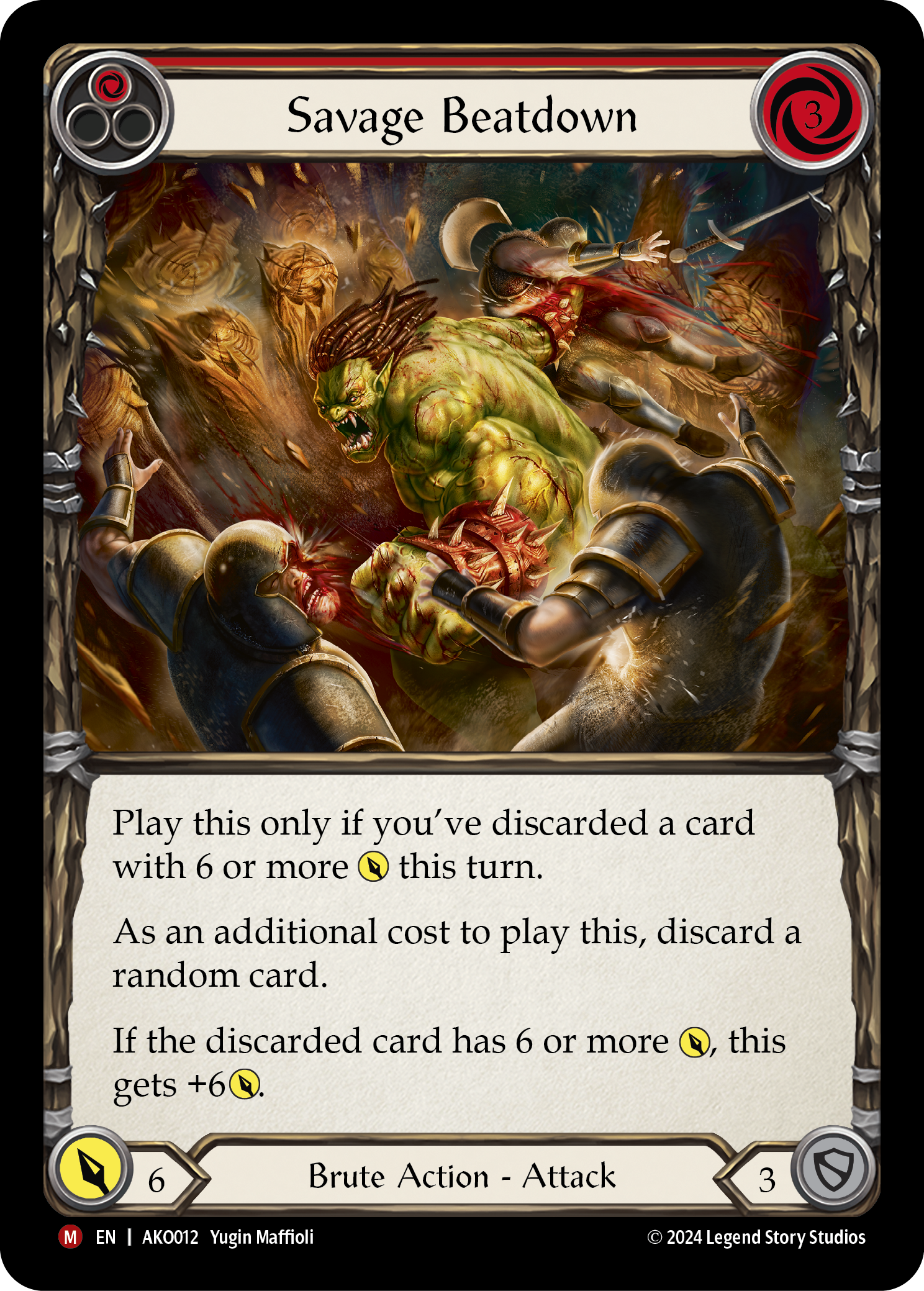
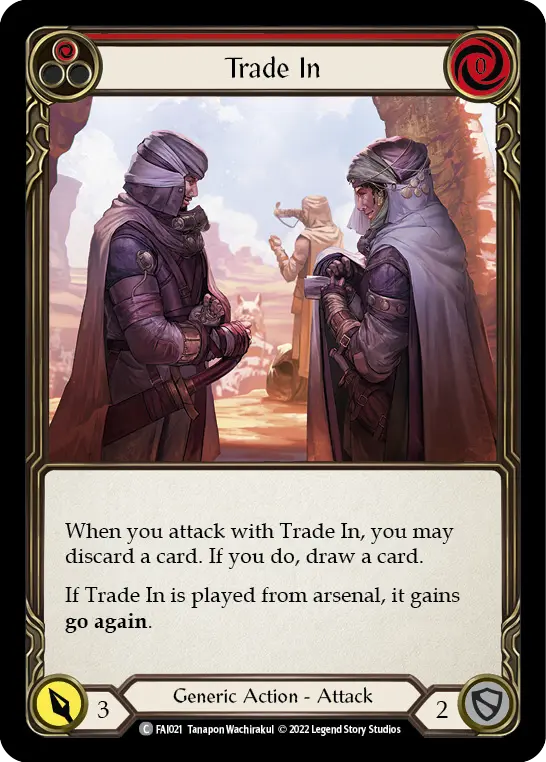
But first, for those unaware, some context on how this deck came to be and why it differs from every Brute you’ve seen.
If you are familiar with Rhinar, or are familiar with facing off against a Rhinar, you’ll understand how strong the keyword intimidate can be, as it rips cards out of your hand that you wish you could be blocking with.
At least that used to be the case.
With the release of Outsiders, blocking - and even blocking out to fatigue - has become less of a viable strategy. This is due in part to aggressive decks like Rangers getting immense buffs. On the other hand, everyone's favorite Ninja, Katsu, has returned to the meta with a vengeful Dishonor combo that can completely remove hero abilities if it hits.
Thanks to this meta shift, damage races have become commonplace, and the old tried and true method of Brute midrange has become less feasable as Brute players are forced to open Bloodrush Bellow or die trying.

Due to this metagame development, I took to researching every card in the game and tried to figure out what would break through the resilience of Guardians' fatigue (RIP Oldhim), while still doing enough damage to kill my opponents. If you have read my previous articles, you know I often discuss card economy and how the best cards are the ones that benefit you by either the effect they have on hit, the damage they provide, or how they interact with your opponent. In the case of Brute, we only have raw damage to threaten our opponents with, and unfortunately almost all hands require us to have 3 cards to do anything substantial.

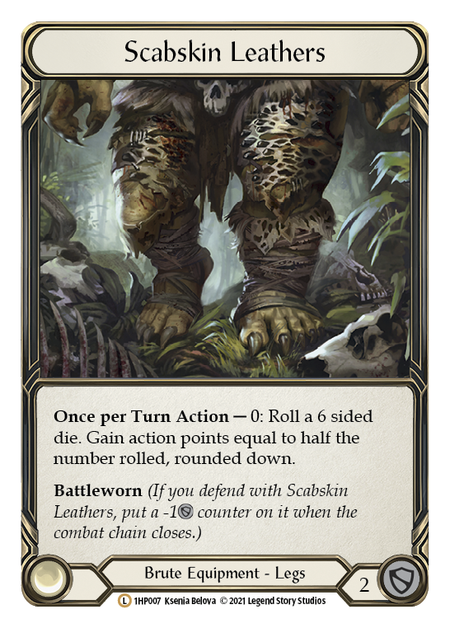
Take the typically standard Brute card Savage Feast, that requires you to discard a card as an additional cost. While you can throw 6 damage at your opponent for 1 resource, because it consumes another card in your hand based on its effect, it in essence has a cost/value of 4 associated with it. Due to this secondary condition existing on the majority of good Brute attacks, the deck is effectively handicapped compared to the other classes, and its consistency is locked behind gambling on multiple action points through Scabskins Leathers to push further damage.
This deck looks to fix that through the trio we mentioned above: Trade In, Savage Beatdown, and Hope Merchant's Hood.
Since every match is a race to the finish line and you can’t solely rely on the old strategy of playing every other turn (as some decks can threaten lethal before you get a chance to tick Tunic up to 3), I decided to take out Barraging Beatdowns and replace that 9-card rainbow with Trade Ins instead.
Why? While Barraging Beatdown may have the potential to deal more damage, it also incentivizes blocking, which is antithetical to Rhinar’s core design and exascerbates Brute’s ineffective hand resourcing. Playing a Barraging Beatdown effectively requires a 4-card hand, instead of the already-costly 3 cards we're built to run.
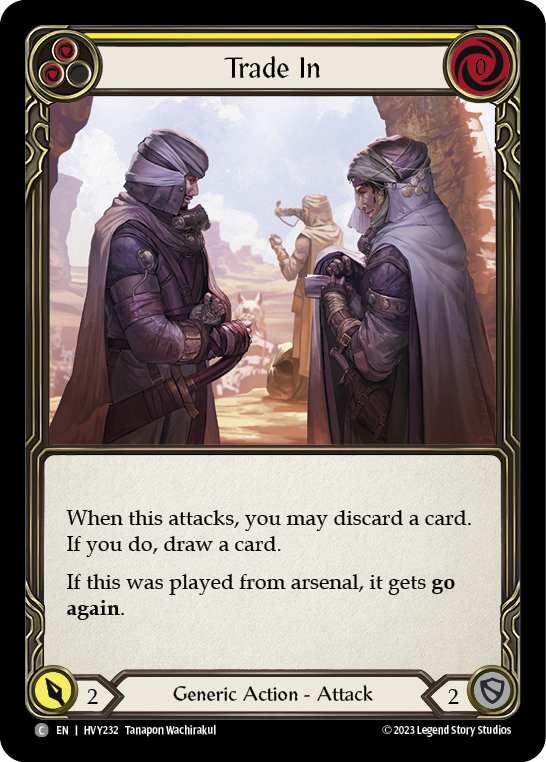
What Trade-In provides is strictly better value:
it provide a one-card hand mulligan with go again when played from Arsenal
it allows the deck to filter for better resources or cards
it provides an extra intimidate, as Rhinar’s hero ability triggers off of any discard effect during your action phase
it sneaks in damage that’ll build up over time
it allows Mandible Claws to have go again
My favorite consequence of this card is that it allows you dig further into your deck for Bloodrush Bellow or Berserk, and it allows you to choose your discard so you can benefit consistently from Beast Within's discard ability. Even when faced with odd hands, you can always use it for its pitch value, or roll Scabskins and play the card without go again, attempting to find better value than what you had.
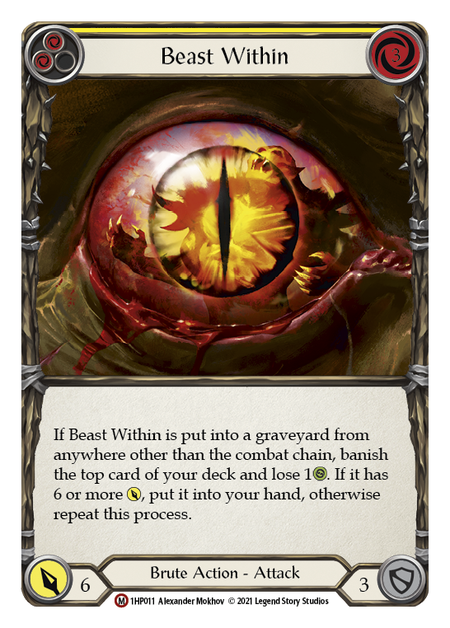
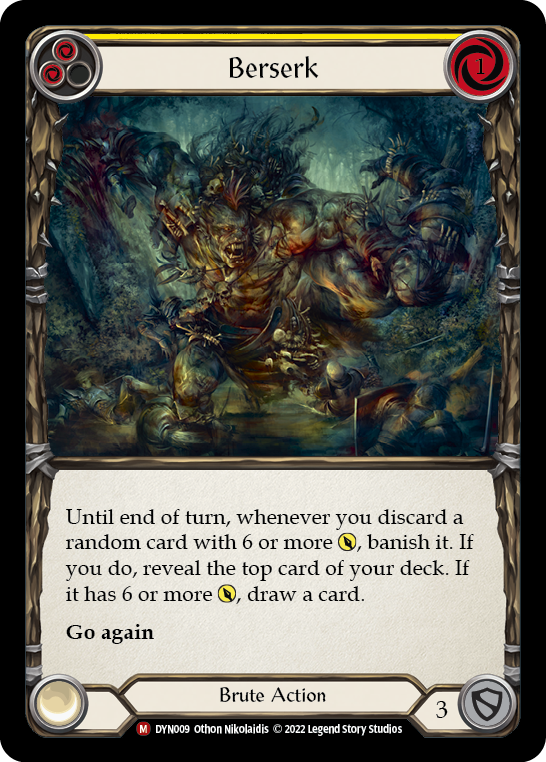
Savage Beatdown allows for a stronger damage ceiling that is necessary to race. While normally I would consider this card an unplayable mess because of its heavy requirements - 3 resources, an additional discard, and for you to have already discarded prior to attacking with it - it’s theorized maximum cost of 9 resources for 12 damage is actually quite reduced thanks to Trade-Ins ability to selectively discard and preserve or find pitch values that can accommodate this beefy attack. Thanks to this, in theory Savage Beatdown becomes consistent enough to run; and when paired with Tear Limb from Limb it can swing up to 18 damage and throw the game forever in your favor.

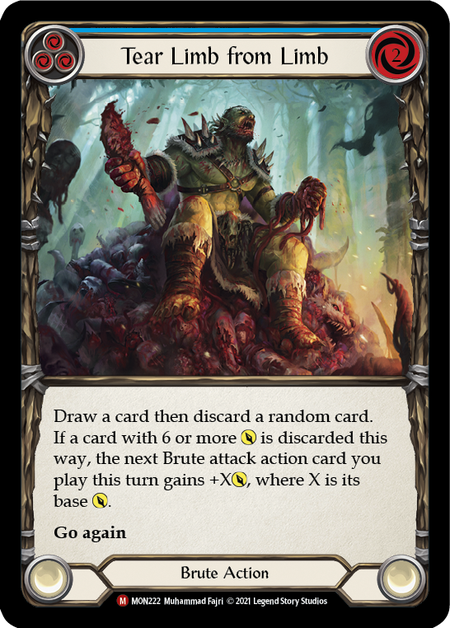
Finally what’s life without a little hope? By and large, the most overlooked helm in the game is Hope Merchant's Hood. It allows a critical redraw on turns that require you to weigh the rare option of "is it worth it to block out with this junk?". By re-drawing your hand back up at instant speed, you can by chance swap into Beast Withins, negating any downside of an incoming Pummel, Tear Asunder, or Codex of Frailty. You can fix hands to accommodate pitch, or to provide you a required 6 attack for your Bloodrush Bellow discard. Or you can find that Reckless Swing and close out the game as a reaction. If I haven’t sold you yet on this head piece, let me ask you this: Why would I settle for 4 chances to draw that card I need to close the game, when I could instead have 8?


This build is constructed on the principle of high risk=high reward. It gambles more often than the typically Rhinar build would probably prefer; but even when it fails to secure the roll its looking for, you can always arsenal Trade In and get that guaranteed payoff next turn




